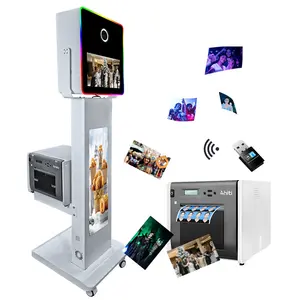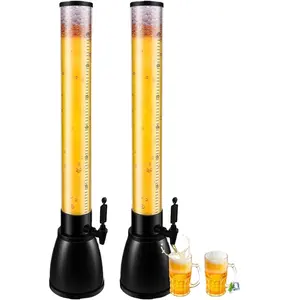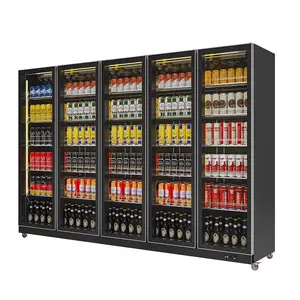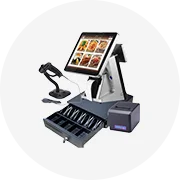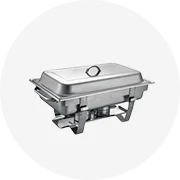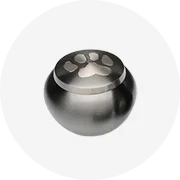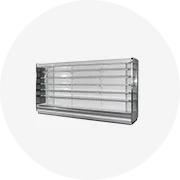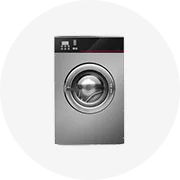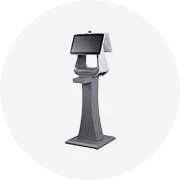Popular in your industry

































































Related Searches:






























































































































Top categories
About freestanding refrigerator
A freestanding refrigerator serves as an indispensable cooling appliance, pivotal for enterprises seeking a versatile and dependable food preservation solution. These units, unlike their built-in counterparts, boast the advantage of portability, enabling effortless relocation within a commercial environment as necessitated. Their role is vital across a spectrum of venues, including eateries and shops, in safeguarding the freshness and quality of perishables.
Types and Characteristics of Freestanding Refrigerators
The assortment of freestanding refrigerators on the market caters to varied commercial requisites. Compact single-door variants are celebrated for their minimal spatial demands, apt for more confined spaces. Conversely, French door models, with expansive shelving and an array of compartments, suit businesses that demand orderly storage and ready access for substantial food quantities. For establishments like patisseries or gelaterias, units with elegantly curved cryogenic doors not only preserve frozen delicacies but also enhance their display. The selection between mono-temperature and bi-temperature models enables firms to tailor their choice to the diversity of their offerings, ensuring each product is kept in ideal conditions.
Structure and Operation of Freestanding Refrigerators
The architecture of a freestanding refrigerator integrates several principal elements that collectively deliver effective refrigeration. The compressor, typically situated at the lower rear, propels the refrigerant through the system, akin to a heart in a body. The condenser coils, found either at the back or the base, dissipate heat as the refrigerant circulates. Internally, the evaporator coils play a pivotal role in heat absorption, thus reducing the internal temperature. Numerous models incorporate dynamic airflow mechanisms that ensure even distribution of cold air, crucial for maintaining a consistent internal climate, which is a cornerstone of food preservation and safety.
Materials and Their Properties
In constructing a freestanding refrigerator, material selection is key to its endurance, efficacy, and aesthetic. Stainless steel 304 is widely favored for its sturdiness and corrosion resistance, ideal for bustling commercial settings with frequent usage and cleaning. Painted steel and steel plate present a cost-effective yet durable alternative, with the added option of color customization. Plastic elements are commonly employed within the interior for their insulative qualities, aiding the unit's energy efficiency by curbing heat exchange.
Business Usages and Applications
Freestanding refrigerators are essential across diverse commercial landscapes. In convenience stores, they cool drinks and snacks, while in hotels, they are crucial for preserving ingredients for meal services. Specialty retailers, offering fine cheeses or chocolates, depend on precise temperature regulation to ensure product excellence. Beyond the realm of food service, in healthcare, these refrigerators store temperature-sensitive medicines and specimens, showcasing their broad utility.
Functions and Tasks
The core purpose of a freestanding refrigerator is to chill and safeguard foodstuffs by sustaining a stable interior temperature. Contemporary models come equipped with various features tailored to specific functions. Some include specialized drawers with modifiable humidity levels for fresh produce longevity, while others have rapid-freeze sections that swiftly cool new additions, thereby safeguarding the rest of the contents from temperature shifts.
Features and Unique Selling Points
Today's freestanding refrigerators are endowed with features that bolster their utility and allure. Energy-conserving LED illumination ensures excellent visibility with reduced power consumption. Digital temperature controls provide precision and convenience, enabling businesses to establish and uphold ideal conditions for their wares. Certain models are fitted with smart technology, allowing for remote supervision and adjustments through smartphone applications, a boon for proprietors who manage their operations remotely.
Benefits and Positive Outcomes
Employing a freestanding refrigerator in a commercial context yields numerous advantages. They enhance food safety through consistent cooling, crucial for adhering to health standards. Models designed for energy efficiency can lead to reduced utility expenditures, and the unit's mobility facilitates optimal spatial utilization and improved customer flow within a business.
How to Use and Operate Effectively
Effective operation of a freestanding refrigerator necessitates familiarity with its functions and capabilities. Organizing the contents to promote adequate air flow is essential, as is calibrating the temperature for the stored products. Periodic temperature checks and necessary adjustments are vital for preserving ideal conditions and averting spoilage.
How to Choose the Right Model
Selecting the appropriate freestanding refrigerator entails assessing the business's specific requirements, such as the nature and quantity of items to be stored, the space allocated for the appliance, and the preferred features. Energy efficiency ratings should be scrutinized for long-term cost benefits, and the unit's dimensions must be matched with the available area to ensure a seamless fit.
How to Clean and Maintain
Consistent cleaning and upkeep are imperative for the performance and lifespan of a freestanding refrigerator. Tasks include defrosting as needed, promptly addressing spills to prevent odors and stains, and vacuuming the condenser coils to eliminate dust accumulation. It's also crucial to inspect and cleanse door seals for tight closure and to maintain the unit level to avoid unnecessary strain on its components.
How to Install
Correct installation of a freestanding refrigerator is uncomplicated yet vital. It should be positioned away from heat sources and direct sunlight to alleviate compressor strain. Adequate clearance around the appliance is important for efficiency. Once situated, the refrigerator should rest for several hours before activation, allowing the refrigerant to stabilize.
Target Audience and Meeting Needs
The intended market for freestanding refrigerators spans a wide array of commercial entities, from boutique retailers to expansive hospitality operations. Each model is crafted to fulfill the distinct demands of these clients, be it the resilience needed for high-volume traffic or the precise cooling required for premium products.
How does a freestanding refrigerator enhance business operations?
A freestanding refrigerator augments business functions by offering a steadfast and efficient method for storing and preserving perishable commodities. Its portability facilitates strategic positioning to optimize consumer access and flow, while advanced refrigeration technology ensures items are maintained at prime temperatures, thus diminishing waste and preserving quality.
What should be considered when selecting a freestanding refrigerator for commercial use?
In choosing a freestanding refrigerator for commercial purposes, factors to weigh include the spatial configuration and size, the variety of products for storage, the required temperature spectrum, and the appliance's energy efficiency. Moreover, the material quality and construction are critical for enduring the rigors of a high-traffic business environment.
How to maintain and ensure the longevity of a freestanding refrigerator?
To ensure the longevity of a freestanding refrigerator, regular maintenance is essential, including thorough cleaning, seal inspection and replacement for effective insulation, and coil dusting for peak performance. Additionally, it's important to avoid overloading and to maintain sufficient space around the appliance for proper air circulation.
